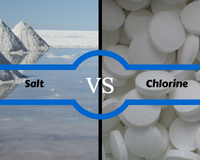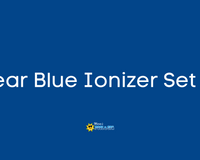How Much Does a Hot Tub REALLY Cost You in Canada in 2024 (A Complete, Honest Analysis)
If you’ve ever made inquiries into buying a hot tub, chances are you’ve found figuring out the ultimate cost is similar to asking a financial advisor how much money you will need to retire.
The answer is often, “That depends. Let’s talk about your needs first ...” Then you’re expected to explain just exactly how you want to structure your pool parties or immediately confer with your partner about travelling to the south of France before you’re 70, all in front of a relative stranger.
This process can be more straightforward. “How much will a hot tub cost?” is a fair question and one that we get all the time. It’s the absolute number one query we are asked.
Here’s the answer. At Mario's, the average cost for a premium Hydropool hot tub installation is $20,000 Canadian., all in – that includes the tub, any platform or pad it needs to be on, electrical needs, cover, you name it.
See? That’s easy. (And isn’t it great that we gave you the average range for everything?)
Factors that Dictate the Cost of a Hot Tub

So why is the answer so often, “it depends?”
Because you have options. A lot of options as it turns out. What we’d like to do here is show you the pros and cons of the hot tubs that exist, to help you figure out what makes sense for you.
Buying a hot tub in some ways is like buying a car. The average price of a new car in Canada is now about $45,000. That’s a well-equipped Honda Civic, which happens to be the No. 1 selling car in Canada and has been for more than two decades.
The Civic is clearly a great car. Reliable, sporty, safe, good for families, singles, students: It’s built to have something for everyone.
But can you buy a nicer car than the Civic? Or one more specialized? Yes, Mercedes would like a word. Can you buy an entirely good car that is less expensive? Of course, you can. There’s a Hyundai salesperson waving at you right now.
The world of hot tubs and spas works in a similar way. There’s a range of tubs, and there are pros and cons for each.
Your values might include:
• Luxury
• Quality
• Affordability, both to buy and to maintain
• A hot tub that holds four, six, eight, ten people, or whatever number you wish
• A tub that has a spa so you can swim in it
• Attractive lights and jets
• One for your entire family to enjoy
• One that will impress your neighbours
• One meant primarily for children to use
• The absolute best hot tub there is because, “hey, we only live once.”
All these expectations are reasonable. Each is available to you in the marketplace.
While choice is great, that kind of variety can make it confusing for a customer trying to figure out how to buy a hot tub. What you don’t want is to pay Mercedes prices and drive away with a Hyundai.
So what most people do with Hydropool do is spend around $20,000 (again, that’s all in, not just for the tub). That gets you into a high-quality acrylic tub, which is what most people want today: Acrylic tubs make up about 70 per cent of the hot tub market.
What type of hot tubs are there? There are basically three types of tubs: Inflatable, rotationally molded and acrylic. And while there are other elements, such as size, features, engineering and quality, what your hot tub is made of ultimately determines pricing more than any other single factor.
Why Buy an Inflatable Hot Tub?

These are the ones you see at mainstream stores like Wal-Mart or Home Depot or online at Amazon or Wayfair with brand names like Coleman or AquaSpa or Bestway. They are often round, and usually having what looks like a little outboard motor attached to them. You see them, and you wonder: Could I just get one of these? Would that work? Does it really plug in to a normal plug-in? Am I going to get burned on long-term costs? And will it last anyway?
There are pros and cons to this kind of hot tub. Cost is certainly one of the pros: It’s your cheapest path to owning a hot tub. So let’s check that box right there. Inflatable hot tubs are routinely sold for around $1000.
Hydropool doesn’t make or sell these tubs. So now is the part where we tell you they are junk, right? Well, we won’t.
There are good reasons why you might want a tub like this:
• You’re just starting out and want to try it, it’s a cost-effective way to get into hot tub ownership.
• It’s for the kids, and you want them to have a place to splash that’s bigger and better than a plastic pool, then it’s a logical choice.
• You want one at a property you won’t use that frequently but want the choice to get into a hot tub.
• Your backyard has ongoing landscaping work and you know you need to move the tub; then inflatable tubs make good sense.
• You want to “plug and play” – buy a hot tub, inflate it, plug it in to the nearest outlet and jump in, this is the closest you’re going to get (they do actually work on normal plug-ins!). They are as easy and as cost-effective to maintain as any other tub, simple to put together and they work.
So why do they cost less? Why haven’t they taken over the entire market?
Pros and Cons of Inflatable Hot Tubs
Inflatable hot tubs are made out of PVC or reinforced vinyl, so they are comparatively inexpensive to make, and those savings are passed on to buyers.
There are trade-offs from this process though.
• Inflatable tubs won’t heat as fast as tubs with more powerful motors.
• The tubs don’t retain heat either, which means their ongoing operating costs can be higher.
• In Canada and the Northern U.S., they often become summer tubs, as many aren’t ever built to work in the winter or they become comparatively more expensive to run, because of the consistent heat loss.
• You need to store the tub somewhere if not in use.
• While moving a hot tub sounds like a good idea, in practice, most people find they end up in one spot.
• Like owning a tent, if you poke a hole in it, you have a serious problem.
As for features, this is not the inflatable tub’s strong suit. An inflatable hot tub usually offers bubbles, but not massage. Most don’t have seating – you sit on the bottom of the tub, which is padded, which is fun for accidental toe touching, but not for everyone.
Who is an inflatable for?
Call it a classic hot tub experience. There are no bad times in a hot tub, and inflatables deliver on that promise at a reasonable cost. They are also easy to maintain and operate, which keeps costs down and your kids will likely love it. But life with an inflatable is not the same as a permanent tub. Which is why some people choose to pay more.
Could a Rotationally Molded Hot Tub Be Right For You? (Wait, what does rotational molded mean?)


Rotationally Molded. Let’s just pause there and look at these two words. There’s a good chance you’ve never seen them placed together before.
This is why buying a hot tub can be hard, because already you don’t know what the salesperson is talking about, but he or she is telling you it’s better than something else. How are you to know?
So what does it mean? You know when you pick up a red wine glass and swirl it around to see how it clings to the glass? Chances are, someone did that and had a “eureka!” moment and invented a new way to build a hot tub (editor’s note: That’s not what happened at all).
Rotationally molded, or “roto mold” if you want to sound a little hip, It involves warming plastic until it turns liquid, pouring it into a mold, twirling the plastic in the air for even coverage, cooling it, and finally, dropping it out of the mold - voila! You have a hot tub shell.
And possibly you have the Caramilk secret too? After all, lots of things are made by roto mold. Pylons. Doll heads and bodies. Kayaks. Storage bins. Auto parts. It’s a common manufacturing technique.
More Permanent, Most Affordable
A roto mold hot tub is the most affordable option if you want a more permanent tub. It’s like the granite countertop of hot tubs. You could pay more for marble (or in the case of hot tubs, acrylic). But you don’t have to. So price is a positive factor if you’re buying a roto mold hot tub (which, by the way, like inflatables, Hydropool doesn’t make).
How much does it cost to get up and running with a roto mold tub? The average is around $6,500 in Canada. Like inflatables, they are available at places such as Home Depot or Lowe’s or Wayfair or Costco or Amazon. You can and probably should put down a pad or deck down but lots of people don’t.
Weight is another benefit. Roto mold tubs are comparatively easy to move in and install, as a couple of strong people can lift it off a truck and place it (and later move it if you want, after draining it, of course). They weigh about half of what a comparable acrylic tub does.
There will be jets, and the jets will offer massage power, although not as vigorous as hot tubs that cost more money.
This is for two reasons:
1) Most of these value-oriented tubs run on a 110V plug-in, which is the kind you have all over your house. But that plug-in isn’t strong enough to power both heating and powerful jets to run at the same time.
2) There’s not enough space on the tub itself to hold anything else, because of the size of the mold and the material the tub is made of. It’s not thin and it would break or bend if it was made any thinner.
You can often set up your roto molded hot tub to work on a stronger 220-volt wiring if you choose, which will increase the power and heat potential, but also increase your operating costs and you will have to get an electrician in.
Roto mold hot tubs aren’t usually as shiny as acrylic versions. They are usually a matte finish and one solid colour, often a neutral like grey or brown.

Size
Sizes are limited in roto mold as well. Acrylic can be fashioned into nearly any tub you desire – accommodating 12 or 15 people is feasible. Roto mold tops out at around 6-7, constrained by the size of machines required for manufacturing. Building a larger mold practically isn't feasible due to the all-in-one nature of the tub. You would need enormous machinery to make such a tub and spin it around in the air, and it’s not cost-effective as a result.
Great for a rental property, with a lower cost of entry, roto mold tubs do everything you’d want a hot tub to do. You can enhance a roto molded tub with lights, waterfalls, stereos, steps, pillows – essentially, you can incorporate any feature a hot tub offers, as long as you're willing to pay for it
Who is roto mold for?
A roto mold hot tub may not look as high-end as an acrylic tub. But it can do more things than an inflatable and it can do almost everything an acrylic can. Some of its features might even be better than an acrylic tub in terms of cost and durability. So who is it for? A roto mold tub is great for someone who values value.
Is that why everyone buys a hot tub? No, it is not. Sometimes we want a little luxury. A little more fun. A little less conversation and a little more action.
Why Do Most People Buy Acrylic Hot Tubs?

For many, maybe even most, this is what a hot tub is meant to be. It is easy to see why: An acrylic hot tub gleams in the sun, it comes in a wide variety of colours, and it typically features synthetic wood panelling. You can get jets to massage any part of your body you might like.
This type of tub has the most options, the most variety, and as you might have guessed, comes in at the highest average installed price of around $20,000. You can pay more. At the high end of the hot tub category, you’re up to $50,000. You can also pay less for acrylic, but at some point you have to be concerned about quality (honestly, you’re better off with a roto mold product if you get too low of a price point. This is a segment where it can be tougher to go bargain shopping and get a tub that will last).
What you’re ultimately buying in an acrylic hot tub is something as beautiful as possible that is also built to be reliable.
In this way, it’s not really like a Honda Civic. It’s a luxury product. Acrylic hot tubs want your envious friends and neighbours to gasp, “Oh, this is nice,” when they see it. They create sighs when people step into the warm water, and “oooh, that feels good” when people lie back onto the powerful jets. That all the parts are meant to impress is part of the point of owning one.
Okay, let’s talk about why acrylic hot tubs cost more. We know this sector the best, because Hydropool only makes these types of tubs.
There are several reasons for the pricing.
• More jets demand more pumps or a stronger pump, which means more money spent on technology and engineering.
• In terms of how they look and function, acrylics have a wider range of options than inflatables or roto molds. The variety means their manufacturing process is more complex.
• The acrylic manufacturing process is more complex, period.
• Acrylic tubs are built to require 220V hardwiring so jets and lights and heaters can all operate at the same time. That comes with the trade-off of needing some electrical work done around the house in order to install it and a higher year-round operating cost.
How they are built
The many-step process to build is costlier than producing tub after tub with the same colour, in the same mold, with the same range of options, as you would for inflatables or roto mold tubs.
• Acrylic hot tubs are made by placing sheets of acrylic material over a mold and then melting the acrylic, while vacuuming the plastic toward the mold, ensuring it comes out perfect. This requires specialized, costly equipment and highly-skilled trained workers.
• The shell is then flipped over and waterproofed with resin and layered with fiberglass for strength, so all parts of the shell are supported in the actual tub itself.
• Then the tub has to be drilled and plumbed, to fit in the motor that powers the jets, plus the jets themselves.
• Then it must be placed in a separate frame that is either wood or metal, which holds the actual motor, jets, wiring for any lights, or elements like speakers.
• Next insulation must be added to help keep your operating costs down.
• That’s before the bottom is put on, which is usually made from a heavier plastic that animals won’t want to chew through to get to your delicious wiring.
• Then the outer case must be attached to the frame as well as the bottom.
• Most manufacturers insist that once built, the hot tub must be tested, filled with water and all parts assessed to ensure they work.
Lots of steps, right? Remember, that’s what you’re paying for. At the top of this article, we pointed out that what your hot tub is made of that determines your pricing more than anything else.
There are other issues with acrylic you will want to know before you buy:
• While acrylic is exceptionally durable, it can chip, and that requires a repairs and possibly a permanent repair mark left in your tub once it’s fixed.
With more options, more things can eventually go wrong over time.
• Acrylic tubs are a more permanent fixture. If you decide you absolutely must move it, it’s going to take a lot of work.
• They are heavy, so you need to make sure they are stable. Depending on the size, you likely need a cement pad put down for it, or a deck, or another strong, consistent flat surface.
• You will likely want to do landscaping around it or need to adjust your current landscaping for it to fit.
Who are acrylic hot tubs really for?
An acrylic hot tub is for someone who believes a hot tub is about luxury and quality combined into one unit, and who will pay for both elements. You can buy a watch that tells time, and you can buy a watch that people will say, “nice watch.” Both are good watches. An acrylic hot tub is meant to be in the second category.
The Water is Calling: What Next?

You’re up to speed now on how hot tubs are made and how that affects their ultimate cost, and we have covered the range of tubs in the marketplace: inflatable, roto mold and acrylic.
Hydropool specializes in acrylic tubs, and if that’s where your interests are, please don’t hesitate to contact us at the button below. If you’re not interested in acrylic and want our advice on what inflatables or roto molds to consider, we are happy to make suggestions for the types of tubs we don’t sell as well.












